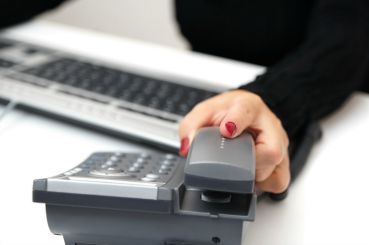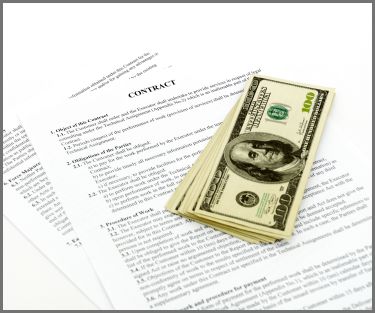Many small business owners and professionals collect payment from clients by invoicing. This is common and convenient for makeup artists, interior decorators, and event planners, just to name a few. Parties sign a contract and at the end the professional sends an invoice to the client for the amount owing. Clients make payment when they receive the invoice.
This sounds simple enough, but what if the client doesn’t pay the invoice? How should you handle the situation and what can you do to get paid?
Remember: the goal is to get what you’re owed without burning bridges.
Here’s a ten step guide for dealing with non-payment. These tactics maximize your chances of getting paid without making the situation worse.
Tip #1: Have a standard process
Establish protocol to follow when non-payment happens. This way, you can handle each case similarly and fairly. You’ll feel less stress if you’ve already thought about the process and have an idea of what to do next. Don’t leave payment due dates open ended, even if your clients are your friends and neighbors. Set a firm date at the beginning of each contract and standardize how you’ll proceed if it isn’t met.
Tip #2: Contact the client immediately
If the invoice isn’t paid on time, approach the client immediately. Communication is the best strategy for securing late payments. Some professionals send emails or re-send the invoice, but phone calls tend to be more effective because you can discuss complicated details right away.
Perhaps the client simply forgot and one phone call is all they need? Maybe they’ve had unforeseen expenses and can’t settle the invoice until pay day?

Calling the client directly helps you work toward a solution more quickly than an email and feels less passive aggressive than a repeated invoice.
Tip #3: Ask about their satisfaction
When you call the client, ask if they were satisfied with their experience. It’s possible they haven’t paid their invoice due to a problem with your service. Some clients are hesitant to confront professionals due to the misconception that you won’t do anything to fix the problem. Asking about their satisfaction lets you offer a resolution to any problems and re-evaluate payment from there.
NOTE: If a client happens to be dissatisfied with your service, you might also want to check this out: How to Deal with Bad Reviews
Tip #4: Agree on a new payment date
Set a new payment date that works for both parties. Don’t settle for vague promises to “as soon as possible”, but remain understanding if there was a legitimate reason for non-payment. Working with your client rather than against them can salvage the business relationship.

Tip #5: Re-evaluate your approach
Some professionals send reminder emails or repeat invoices before they call the client. If you’ve done this, change your strategy and call them. For some people, going from receiving emails to a sudden phone call is enough pressure to get payment.
If that doesn’t work or you’ve already spoken to the client with no luck, maybe assess your tone and language. A formal tone and official wording might be more effective than your usual friendly greeting and warm, casual speech. You don’t want to be rude, but you do want to communicate that you mean business. Remain polite and professional, but get straight to the point.
Tip #6: Send a written warning
A written warning is a formal letter sent to the client. This documents the steps you’ve taken so far, and informs the client of the steps you’re prepared to take.
Never make empty threats! If you aren’t sure you’ll actually take legal action, don’t mention it. Falsely intimidating clients will only make the situation hostile. You’re simply giving the client additional motivation to pay. Instead of threatening legal action if you’re not prepared to go that far, tell the client you’ll be forced to permanently withdraw future services if non-payment continues.
Tip #7: Get professional advice
Facebook groups and professional forums are useful, but they shouldn’t be your only source of information. If you want to pursue the non-payment further, consult a professional. Speak with a lawyer about whether the situation is serious enough for claims court or approach a collections mediator about the details of forwarding the case to a collections agency.

Networking is helpful to get an idea of other professionals’ experiences, but don’t take the information there as concrete fact. The better you educate yourself about your options, the more effectively you can handle the situation.
Tip #8: Decide how to proceed
By now, you’ve tried negotiating with the client, accommodating their needs, and warning them that you’re prepared for further action. If the client still won’t pay, the best strategy in most cases is to permanently withdraw your services. Write them a letter informing them that they are in breach of contract and letting them know that your services are, from this date on, withdrawn. This means that you won’t take them on as a client again.
Legal action might also be an option, but remember that this can be very expensive and time consuming. The cost of hiring a lawyer and taking the client to claims court might be much larger than what you’ll lose from accepting non-payment and moving on. Forwarding the case to a collections agency is also an option. Evaluate whether the cost outweighs the size of the payment.
Tip #9: Stay professional
No matter how frustrated you feel, make sure that you stay professional. You should not, under any circumstances, speak badly about the client to your other clients or colleagues. How you handle non-payments says more about you to the public than it does about your client. Losing future contracts because you were rude or unprofessional isn’t worth getting the money you’re owed by one person. Your private financial dealings with each client should stay private.
Tip #10: Know when to cut your losses
The unfortunate reality of non-payments is that sometimes you’re best to let the contract go unpaid. If the cost of pursuing the payment is higher than it’s worth and negotiations have broken down entirely, continuing the process becomes a waste of time and resources. Account for the loss of profit from the non-payment in your budget and move on to other contracts. Are there aspects of this case that you could have handled better? Are there ways that you could improve communication next time? Learn from your experiences and adjust your non-payment protocol accordingly.
Bonus Tip: Minimize your risk!
It’s not unusual for a professional to require an up-front payment for services. Of course this will depend on the service you provide, but many professionals will at the very least require a deposit from the client when they sign the contract, usually about 30-50% of the estimated cost of the job.
If it’s a large job, such as a home redesign or a luxury wedding, you can also consider a payment schedule during the course of the contract instead of waiting until the job is done. For example, you can require a 30% deposit at contract signing, then another 30% payment on a date about half-way through the job, and the remaining balance at the end of the project.

Collecting payment throughout the job will not only ensure that you will get what you’re owed from your clients, it will also help your client meet their obligations by allowing them to make smaller, more manageable payments instead of one large lump sum.
Non-payment is a frustrating experience. You are a professional, however, and handling yourself with tact is the best strategy. Remember that getting the money from one contract isn’t worth a poor reputation.
